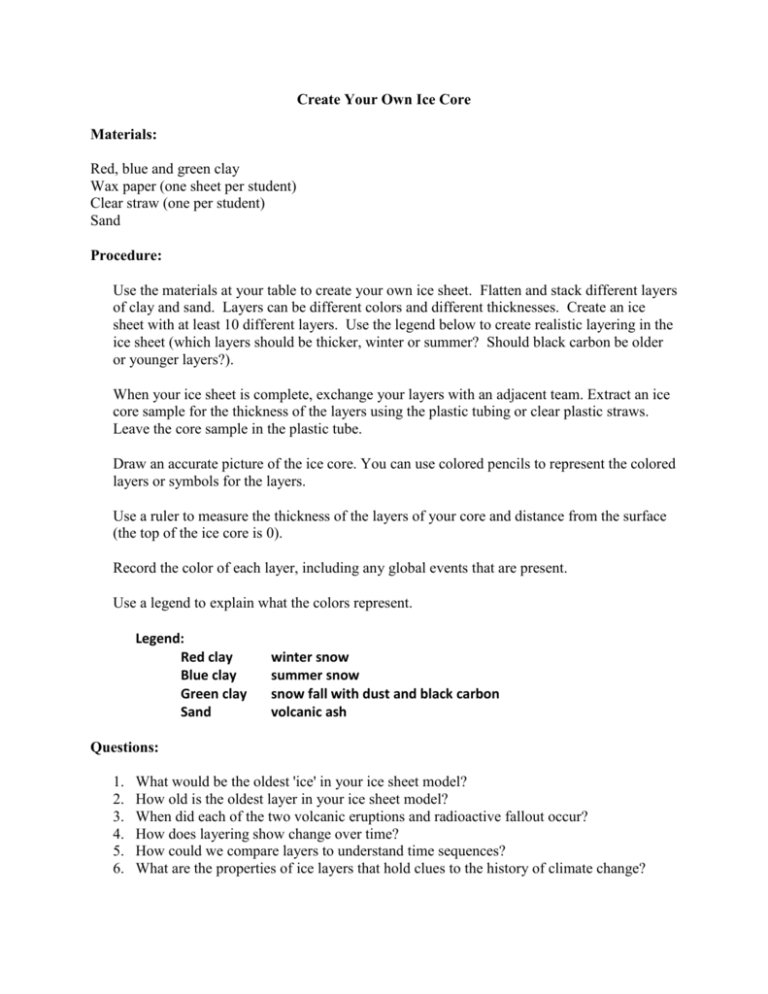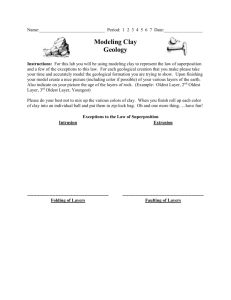Create Your Own Ice Core Activity
advertisement

Create Your Own Ice Core Materials: Red, blue and green clay Wax paper (one sheet per student) Clear straw (one per student) Sand Procedure: Use the materials at your table to create your own ice sheet. Flatten and stack different layers of clay and sand. Layers can be different colors and different thicknesses. Create an ice sheet with at least 10 different layers. Use the legend below to create realistic layering in the ice sheet (which layers should be thicker, winter or summer? Should black carbon be older or younger layers?). When your ice sheet is complete, exchange your layers with an adjacent team. Extract an ice core sample for the thickness of the layers using the plastic tubing or clear plastic straws. Leave the core sample in the plastic tube. Draw an accurate picture of the ice core. You can use colored pencils to represent the colored layers or symbols for the layers. Use a ruler to measure the thickness of the layers of your core and distance from the surface (the top of the ice core is 0). Record the color of each layer, including any global events that are present. Use a legend to explain what the colors represent. Legend: Red clay Blue clay Green clay Sand winter snow summer snow snow fall with dust and black carbon volcanic ash Questions: 1. 2. 3. 4. 5. 6. What would be the oldest 'ice' in your ice sheet model? How old is the oldest layer in your ice sheet model? When did each of the two volcanic eruptions and radioactive fallout occur? How does layering show change over time? How could we compare layers to understand time sequences? What are the properties of ice layers that hold clues to the history of climate change? Vocabulary: Albedo Climate Feedback (positive and negative) Paleoclimate Black carbon Climate forcings Ice core








